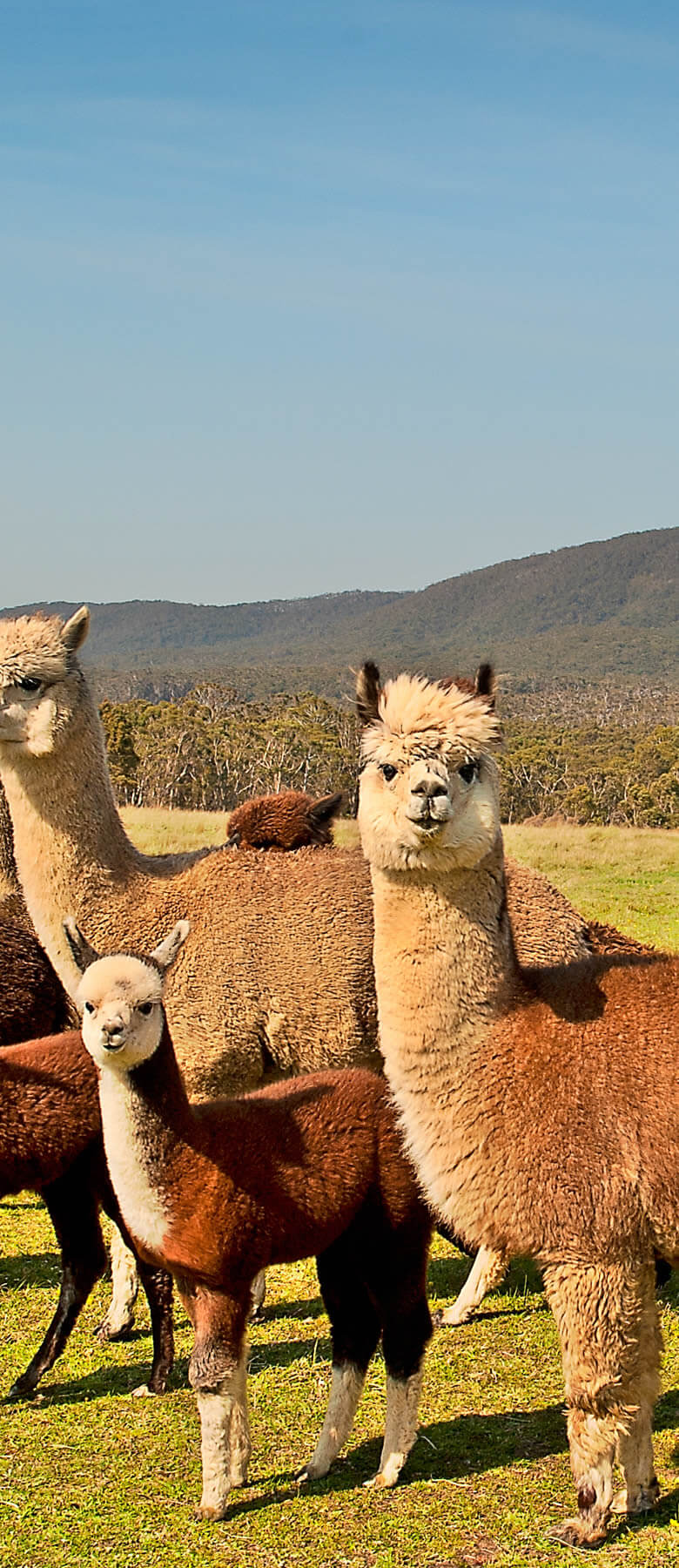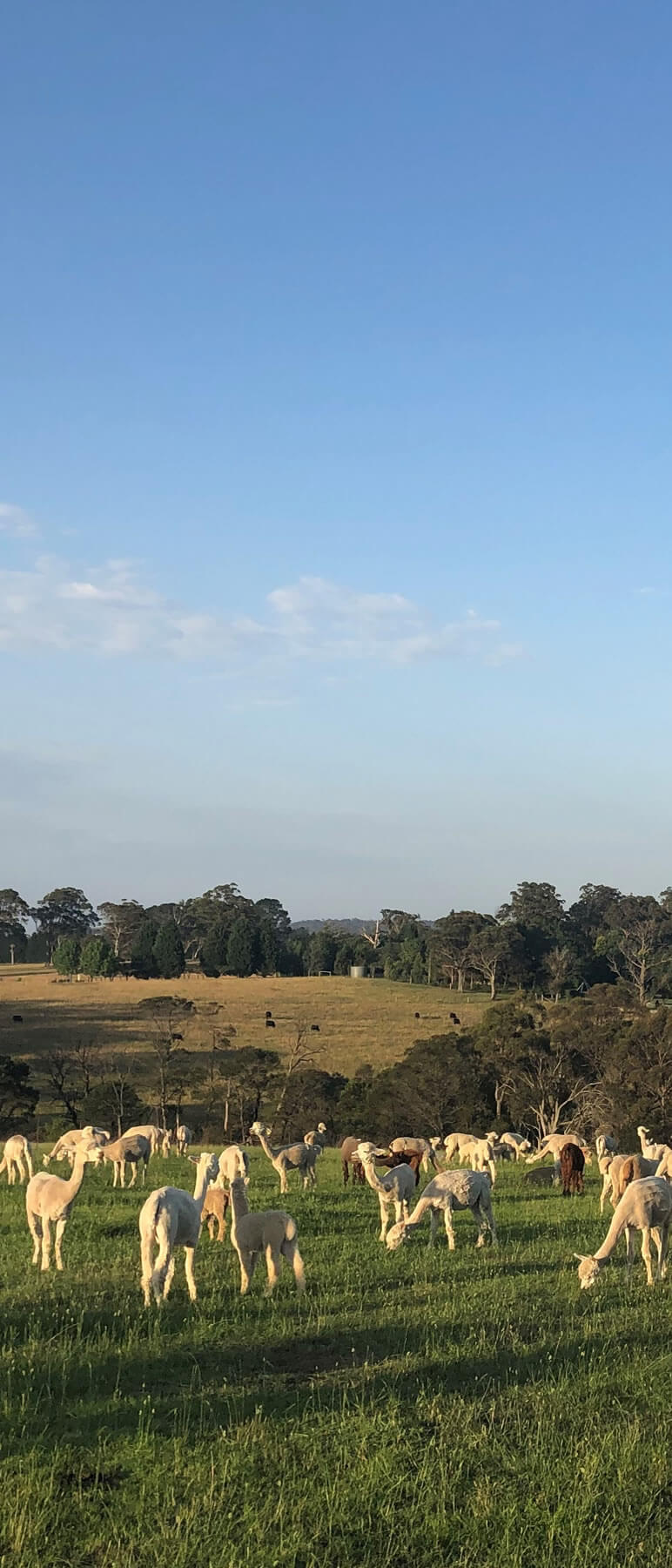Q-Alpaca
Q Alpaca is a voluntary alpaca quality assurance program maintained by the Australian Alpaca Association. Alpaca growers who participate in Q Alpaca work with MAP-approved veterinarians.
The program is designed to:
- Encourage easier and more affordable diagnosis monitoring, and management of known diseases, and so promote greater member participation.
- Give maximum reduction of risk that a defined Emergency Animal Disease (such as Foot and Mouth Disease) could affect your herd in the event of an outbreak in Australia.
- Ensure your alpaca herd remains healthy, by agreeing that any death within your herd is professionally investigated by the same approved veterinarian.
- Ensure there is a minimal chance of taking certain preventable infections and infestations to your client’s herd, as well as preventing the introduction of these conditions to your herd. Examples of such conditions include Johne’s Disease (JD), severe worm infestation, liver disease, gastric ulceration, liver fluke infestation, and coccidiosis.
The program comprises of forms for the explanation of:
- A herd and property management plan – an agreement between an owner and their vet to maintain Q-Alpaca requirements.
- A registrar that identifies any animals that come and go from your property.
- Provision of an Annual Stock Return to your vet, containing herd details.
- An agreement with your vet to conduct post-mortem examinations of any animals over 12 months of age that dies or is euthanased for any reason or for any cria under 12 months with a history of wasting or diarrohea that dies or is euthansed. Animals over 15 years of age or those killed in a dog attack are exempt.
How do I join?
Joining and renewing your Q-Alpaca membership is done through your AAA membership account on eAlpaca. Annual renewals are due from 1 July each year and if document is not submitted by 30 September, registration will be cancelled.
Q-Alpaca is $28 annually for herds up to 20 registered animals and $60 for herds with over 20 registered animals. An additional management fee will be charged by your approved vet.
Q Alpaca forms
Q Alpaca FAQs
Can Q and non Q animals travel together in a float if there is a divider?
Yes they can, with a divider. The divider needs to be solid (not mesh.. plywood affixed to existing mesh will suffice) and no less than 1 metre high between the non-assessed and Q animals. The purpose of the solid barrier is to ensure that faeces from the non-assessed animals does not find its way into the compartment with the Q Animals.
Can a non-assessed animal be introduced into my Q Alpaca herd?
Firstly, the breeder has to notify their Q-Alpaca veterinarian. The animal will need to be faecal tested for Johne’s Disease and quarantined before it is allowed to join the rest of the Q-Alpaca herd.
Non-assessed alpacas that are introduced into Q-Alpaca herds must be isolated and faecal cultured. Faecal culture should be conducted on all non-assessed introduced alpacas over 12 months of age (or once they reach 12 months of age) and that pooled faecal culture (up to 5 alpacas per pool) is OK.
The vet will do the faecal testing and the breeder will have to have an area away from the rest of the herd that satisfies her veterinarian, so that the arriving animal can stay in quarantine until the faecal sample comes back clear. This can take a few weeks. It is common practice in these situations to include a wether from her own herd to keep the new arrival company. Again, this should be discussed and approved with her veterinarian.
Can I introduce a goat/sheep/cow into my farm?
Alpaca participating in Q-Alpaca Program can run with other susceptible species (sheep, cattle, goats), provided those species meet the relevant MAP criteria.
What happens to my Q Alpaca membership if I move?
The easiest way to think of Q-Alpaca is that it actually belongs to the property and the animals residing on that land fall under the Q-Alpaca status. So you will have to have your vet assess the new property and approve continuation with the program, if the property complies with the requirements. Should that happen (the vet approves the property), they will need to be issued with a new Q-Alpaca certificate for the new property.
I have not renewed my AAA membership, can I continue with the Q Alpaca program?
You do not have to be a AAA member to participate in Q Alpaca.
Is the annual stock report due on the anniversary of joining each year?
No, everyone submits their annual stock report (Q3) at the same time, with figures based on the 30 June. They are due to be submitted to the office before the end of October each year. New members use their joining number as the opening number at A1.
How does Q Alpaca membership affect penning at shows?
Q Alpaca animals need to be penned in the assessed area along with MN1 (monitored negative) assessed animals in accordance with AlpacaMAP.
There needs to be a two metre distance or a 1 metre high solid barrier (straw bales/banners etc work well) between assessed (MAP or Q-Alpaca) animals and non-assessed animals.
Do I have to advise you about dog attacks?
The dog attack form is voluntary and independent of the Q Alpaca scheme, so does not need to be completed. If the attack is fatal, a post mortem is not required.
Purchasing a cria from an unassessed herd – does this creates problems with Q-Alpaca membership (renewal).
It is recommended you work collaboratively with your vet and discuss future purchases as it is very important that you don’t inadvertently damage your own biosecurity and health of your animals.
Assessed animals in a non assessed paddock
If assessed animals end up in a non-assessed paddock for a period time it is suggested the member speak with the veterinarian overseeing that members Q-Alpaca program so as not to compromise the integrity of the Q-Alpaca program. The vet can perform a risk assessment, look at the specific Q-Alpaca property management plan, and make a more informed decision on a plan for the alpacas.
The risk to the animals would be determined on the length of time they are in the non- assessed paddock. Would be low if the paddock has been empty for six months or longer, there were only two NA animals in the paddock prior to this, and that the sheep strain of Johne’s disease has not yet been detected in alpacas in Australia. Also assuming if any sheep had been in the paddock they weren’t known to be infected with OJD?
What is AlpacaMAP?
Animal Health Australia (AHA) manages Australia’s Johne’s Disease Market Assurance Program for Alpaca (AlpacaMAP) to help producers identify and promote their low risk of Johne’s disease infection.


